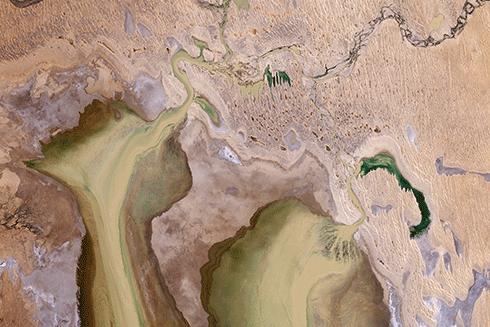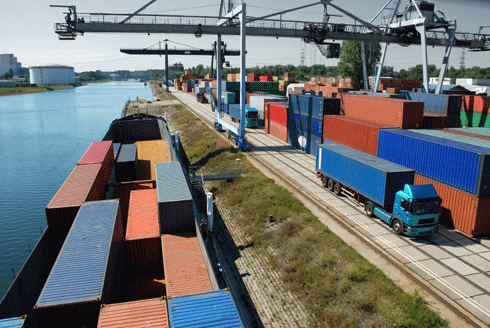
|
Published: 22 September 2014
Lake Eyre Basin partnership wins 2014 Australian Riverprize
The International RiverFoundation has awarded the 2014 Australian Riverprize to a research-community-state partnership working to protect the natural values of the Lake Eyre Basin.

|
|
Water pours into Lake Eyre in 2009. Credit:
Jesse Allen, NASA
|
The Lake Eyre Basin is one of the last naturally free-flowing river basins in the world, occupying one-sixth of the Australian continent and spanning four states. According to the award judges, it supports diverse human communities and outstanding cultural and natural values.
The Lake Eyre Basin Partnership is made up of Natural Resource Management (NRM) groups from the four states included in the basin – Queensland, New South Wales, South Australia and the Northern Territory – along with scientists, community advisory groups and landholders.
Director of the Centre for Ecosystems Science at the University of New South Wales, Professor Richard Kingsford, is among those involved with the partnership, which received the award for successfully implementing two decades of river protection through extensive engagement, collaboration and action.
The award was presented during the recent International Riversymposium in Canberra.
Kate Andrew, who accepted the award on behalf of the partnership, said: ‘The Lake Eyre Basin Partnership demonstrates the importance of commitment to rivers as well as persistence. For people to have a passion and be able to sustain that for 20 years is a remarkable thing’.
Dr Deborah Nias, Chair of the Australian Riverprize judging panel, said: ‘The Lake Eyre Basin provides us with evidence that we can manage our Basins in a way that protects their future and gives hope to those who depend on them for their livelihoods and spiritual connections.’
‘The complexity of managing this vast, remote area demonstrates the importance of building relationships between government, the Indigenous people and other landholders and business.
‘The excellent science behind the Lake Eyre Basin shows the importance of quality research and monitoring, and the need for continued investment in research that will guide the management of the Basin in the future.’
The other finalists in the 2014 Australian Riverprize were Bannister Creek (WA), the Boorowa River (NSW) and Margaret River (WA) which was highly commended by the judges.
The win makes the Lake Eyre Basin partnership a finalist in the 2015 Thiess International Riverprize to be announced next year. The International RiverFoundation has just awarded the 2014 Thiess International Riverprize to Europe’s River Rhine.
The International Commission for the Protection of the Rhine (ICPR) received the award for bringing Europe’s River Rhine back to life following a devastating chemical accident in 1986, which wiped out nearly all biological life. Prior to the accident, industrialisation and burgeoning populations had already caused major degradation to the river and, as early as the 1960s, the Rhine, which flows through six countries, was notoriously known as the ‘sewer of Europe’.
The restoration of the Rhine has taken the best part of a century, and involved extensive transboundary river management and cooperation.
Now, almost all of the 58 million inhabitants of the Rhine catchment are connected to urban wastewater treatment plants, water quality has improved considerably, and inventories show that fish species composition in the Rhine is almost back to what is was before the chemical spill.
Source: International RiverFoundation



